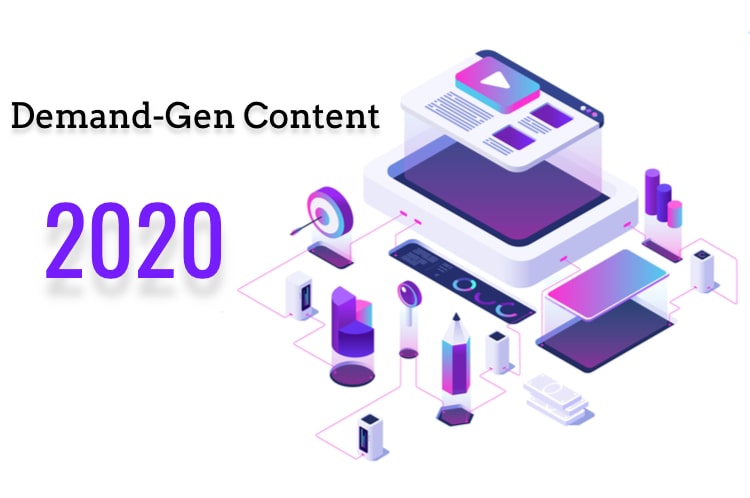Quick Q: What type of content performs best in terms of engagement and social sharing – long form or short form?
“Long form content, obviously” I hear you say pointing at a bunch of studies.
But, imagine with me if you will, a text message from your best friend that reads: “Good afternoon. I would like to request your opinion with respect to a date this evening.”
This long and overly complicated way of communicating seems tiring and unnecessary for both the person typing and the person reading.
Now, imagine the alternative:
“Wanna hang out?”
It’s easy to see that the alternative is not only shorter but also more efficient. It uses fewer characters, it takes less time to type and to read and, most importantly, it conveys the same message.
So, why do so many copywriters and content creators prefer long form content?
Truth be told, there has been a long-standing debate over what is better – long form or short form content.
Long form content enthusiasts believe that long copy performs better in terms of SEO, engagement and social sharing. Short form content advocates, on the other hand, argue that people don’t read word-by-word in the web, so there’s no reason to write long articles.
So, who’s right?
In this article, we will discuss the advantages and disadvantages of both long and short copy and will explore new possibilities in short form content.
Long Form Content
Long form content is described as content that is usually 2,000 words in length or more. It can take the form of guides, eBooks, power pages, whitepapers, videos or webinars.
By now, you’ve probably heard a great deal about the benefits of long form content. A study by NewsWhip, for example, found that long articles do exceptionally well on social media, even when they are being accessed from mobile devices.
According to the study, cited by buzzsumo.com, one of the longest viral stories in 2013 was a 3,535 words transcription of a lecture by Neil Gaiman on the importance of reading, posted by The Guardian.
Another study by SerpIQ looked at how long form content performs in terms of ranking. SerpIQ analyzed the first 10 search results for over 20, 000 keywords and found that the length of the content was directly correlated to the position in search results.
Guru bloggers, like Neil Patel (QuickSprout), Darren Rowse (ProBlogger) or Garrett Moon (CoSchedule) also believe that long form content can grow traffic, improve rankings and boost engagement. Neil Patel, for example, found that his blog posts that were over 1,500 words received 68% more tweets and 22% more Facebook likes that those that were under 1,500 words.
Another advantage long content has is that it allows copywriters and content creators to provide more information and to answer more objections.
Imagine you are looking to buy a new hair removal product and land on a blog post that talks about the advantages of home laser hair removal technologies. This is your first time on that blog and, understandingly, you have your doubts. You ask yourself:
- Is the author/blog trustworthy?
- Do I afford this product?
- How does this product work?
Long form content allows copywriters and content writers to answer most of the questions and objections a prospect might have.
Short Form Content
Short form content is described as content that is typically less than 1,000 words long. In fact, according to Matt Mullenweg, founder of WordPress.com, cited by searchenginewatch.com, the average length of a WordPress post is 280 words, and this number has remained constant over the past few years. Short content can take the form of blog posts, list posts, infographics, social media posts, Vine videos and so on.
A lot of evidence points to the advantages of long content. But, does this mean you should always write extra-long articles? No, not necessarily.
Consider this: the second most popular smartphone app in the US is Snapchat. Unlike any other social media platform, people can only see content on Snapchat for 10 seconds before it disappears. This 10 seconds limit is exactly what makes sharing content on Snapchat fun and exciting.
Snapchat is the perfect example that short form content it’s more engaging. Not only that short content is easier to digest, but it’s easier to share as well.
One of the main arguments short form advocates use is that people rarely read word-by-word on the web. Instead, they scan the page, picking out words and sentences. According to a study by Chartbeat, 55% of Internet users spend fewer than 15 seconds actively on a page.
Another argument is that today’s digital consumers are looking for more concise, “snackable” pieces of content that tell a meaningful story in less time than long-form content.
Take Humans of New York as an excellent example of short form storytelling. Part of what made this project so successful is that it uses a simple image and just a few sentences to capture the protagonist’s story. More importantly, it manages to be meaningful by capturing authentic emotions and experiences.
There’s another important issue that none of the studies above presented: it’s not the length of the article that matters, but the quality of its information. After all, no one would waste time reading a poorly-written article regardless of its length.
Storytelling Possibilities in Short Form Content
With social media channels such as Vine, Snapchat and Instagram becoming more and more popular, Internet users are becoming accustomed to bite-sized messages. While long form content may never disappear, more and more copywriters and are beginning to see the storytelling possibilities in short form content.
But, does it really work? Yes, it does. In fact, brands like Coca-Cola, General Electric or Adidas already began to implement short form content in their content marketing strategies.
Take Coca-Cola as an example. They used short form content in their “Twelve Days of GIFs” campaign in 2013. As a result of the campaign, their social presence on Tumble grew and they got more engagement.
Let me show you some more examples of how long form content can be crammed into a smaller package.
How Lana del Rey Promoted Her New Album’s First Single
Back in 2014, singer and songwriter Lana del Rey launched her Tumbler account. The first post was a series of GIF promoting her new album’s first single, West Coast. The GIFS were captured from the video. These short, bite-sized snippets didn’t take too much to take but got more than 20,000 Tumblr notes. Do you think she would have managed to get the same engagement rate with a long form article? I doubt it.
National Geographic’s Instagram Account
National Geographic has been around for more than a century and is a reputable magazine, in large part because of their excellent photojournalism practices.
National Geographic’s Instagram account confirms that you don’t need +2,000 words to create captivating stories. Not only that their images are simply stunning, but the magazine also knows how to take advantage of Instagram’s caption space to create amazing content. Their posts read more like a magazine article than a typical, boring caption.
Business Insider India’s Infographic on Business Schools
According to one study, cited by QuickSprout, infographics get up to three times more shares and likes than other types of content. So, when Business Insider India decided to illustrate the top 25 business schools in the world through an infographic, the viral potential was already there.
According to exacttarget.com, Business Insider India’s infographic was one of the best examples of short form content of 2014.
Humans of New York
Since its launch in 2010, the Humans of New York blog has produced some of the most engaging web content. It’s Facebook page has over 15 million likes and several thousand shares per post. More than that, the book Humans of New York is a number 1 New York Times Bestseller.
As I said before, part of what made this project so successful was that its author, Brandon Stanton knew how to take advantage of short form content and used it to build his brand. He uses simple images with just a few powerful words that capture the protagonist’s story.
Curata’s Slideshare Advice
One of the best ways to grab the attention of those scanning your articles is to include quotes. Curata, for example, collected 27 inspiring quotes about content marketing from various experts and used them to create a Slideshare. Each slide includes one quote along with the Twitter details of the quoted person.
This type of short form content is refreshing, engaging and incredibly easy to create.
What Type of Content Should You Write?
Generally speaking, long content works best for technical products that need a lot of explanation. Copywriters need to explain to their audience how the product works and why they need it in order to persuade them to buy it. Long form content is also a great option for high-value items, as people need more reasons as to why they should make such an expensive purchase.
But, there are times when short content works best.
So, what type of content should you create?
It depends on three essential questions.
Who Is Your Audience?
Are you creating content for millennials looking for something fun to read on their commute to school or for professionals looking for relevant news about their industry? The length of your content is highly influenced by your audience and their needs. After all, it would make no sense to create 2,000 words long articles if your audience spends most of its time browsing through Slideshare.
What Is The Goal Of Your Content?
Long form content has been proved to improve rankings, while short content has been shown to be more engaging. So, what do you want to achieve with your content: traffic, engagement, search rankings or more?
On What Platform Will It Be Published?
It’s a no-brainer that people interact with different platforms in different ways. So, while they might spend 20 minutes on a blog reading a 2,000 words article, they would definitely not bother to read a 2,000 words Facebook post.
Before deciding whether to write long content of short content, consider the platform it will be published on.
Whether you follow the long form content gospel or the short form one, unique content should be the TOP priority for all copywriters and article writers. You should make sure your website is updated regularly with fresh content and with information that is relevant to your audience.
Take a look at your blog’s stats. What type of content performs better, long form content or short form content?
I’d love to hear your thoughts.







